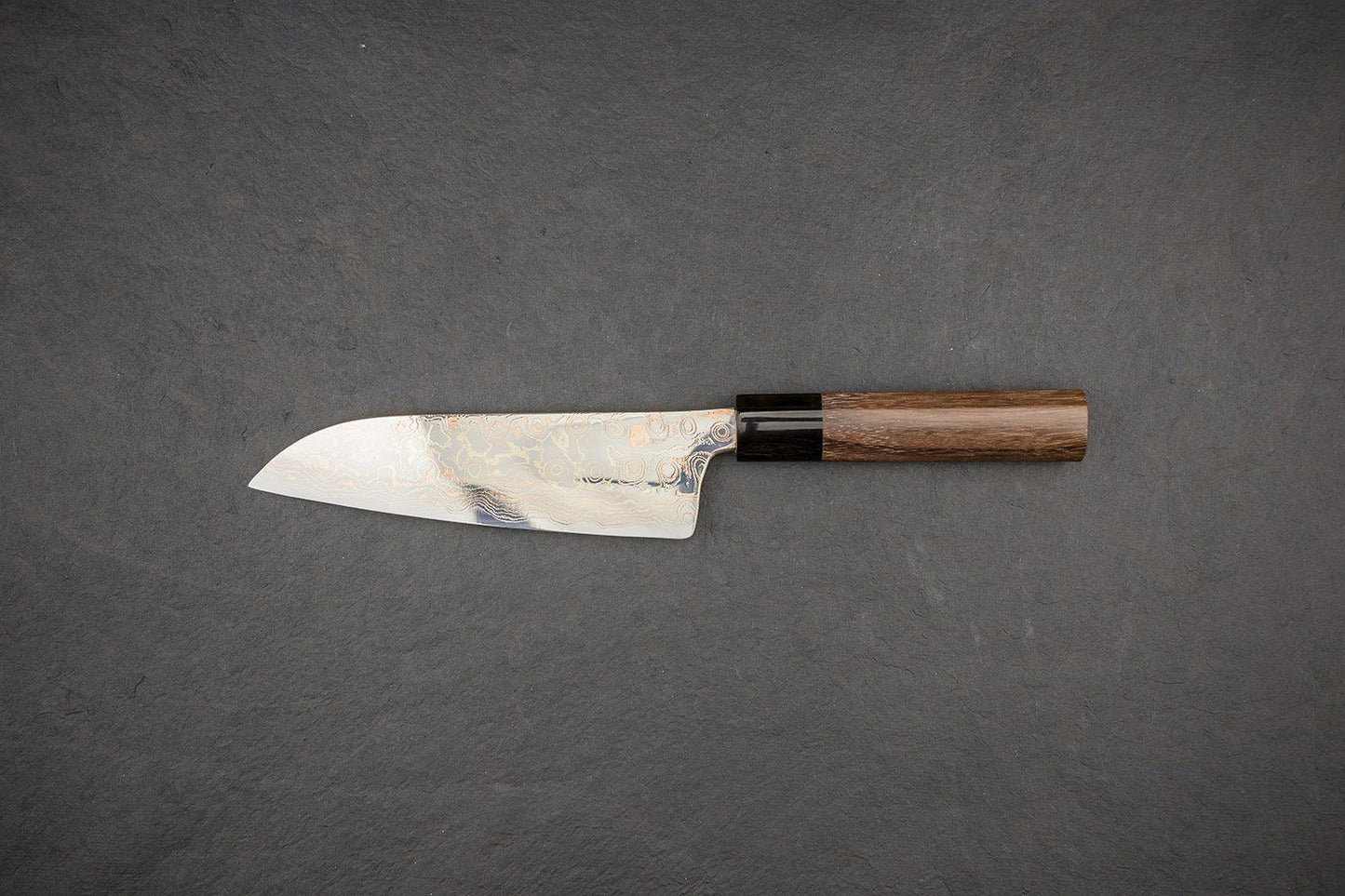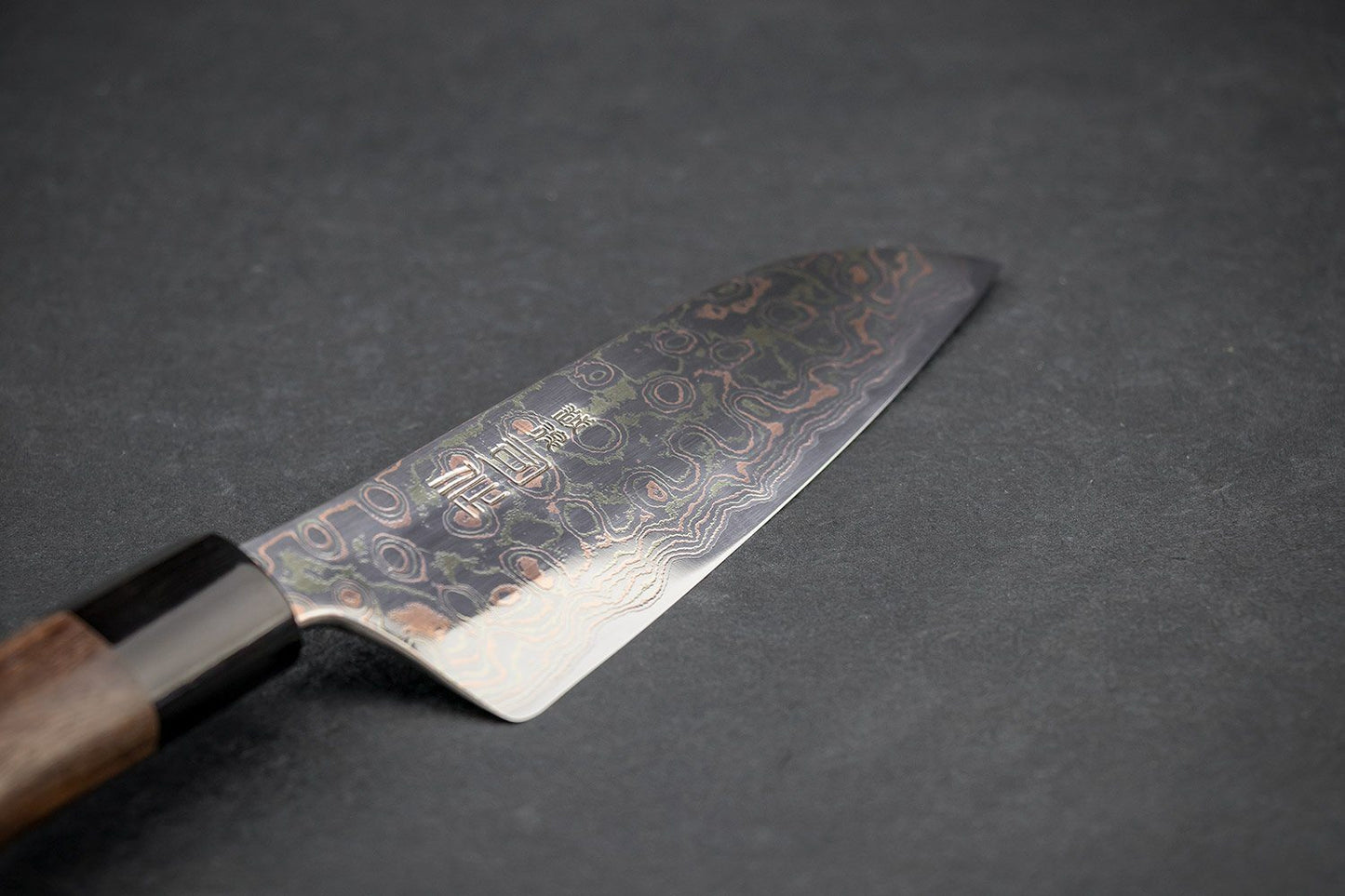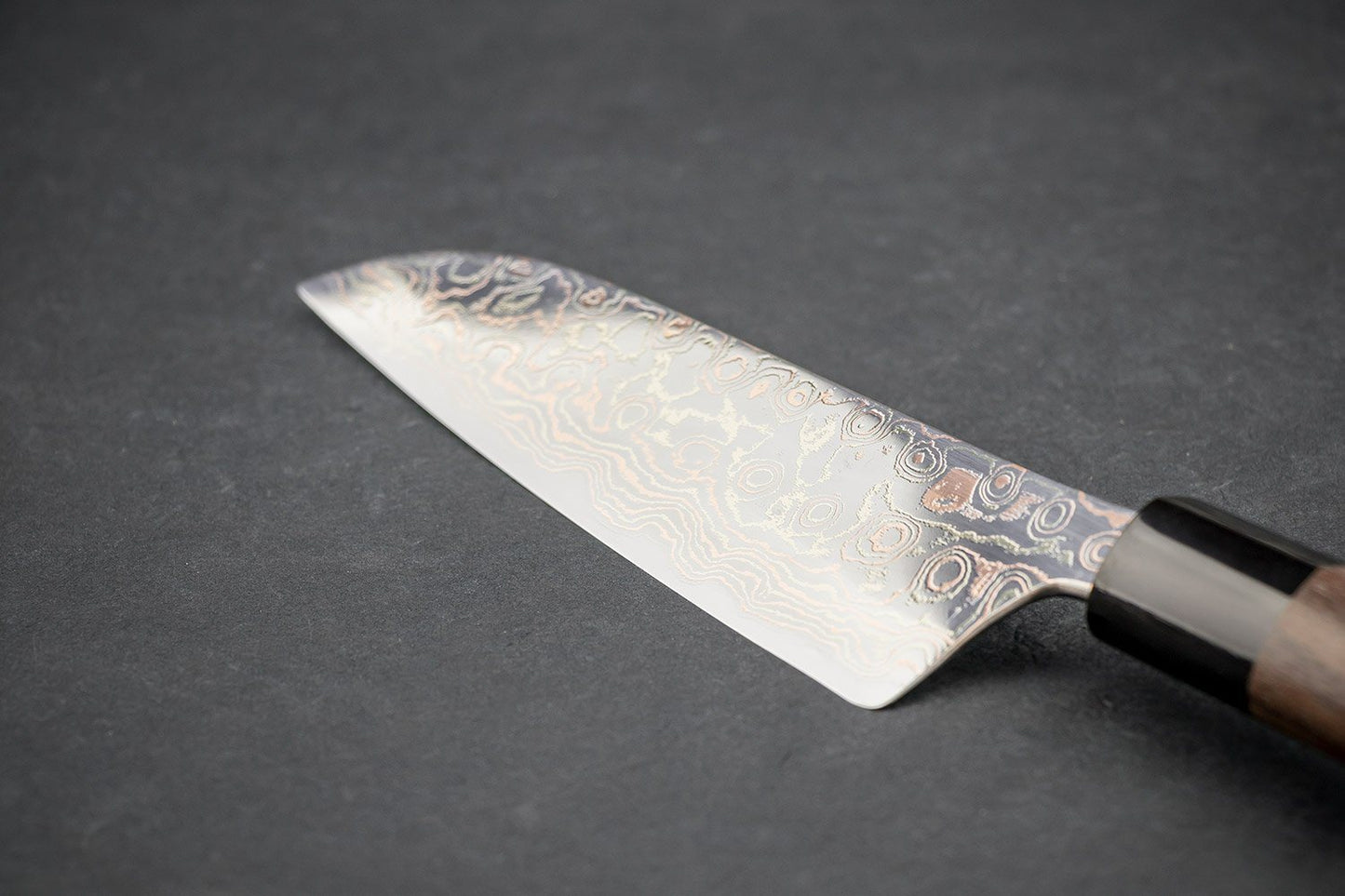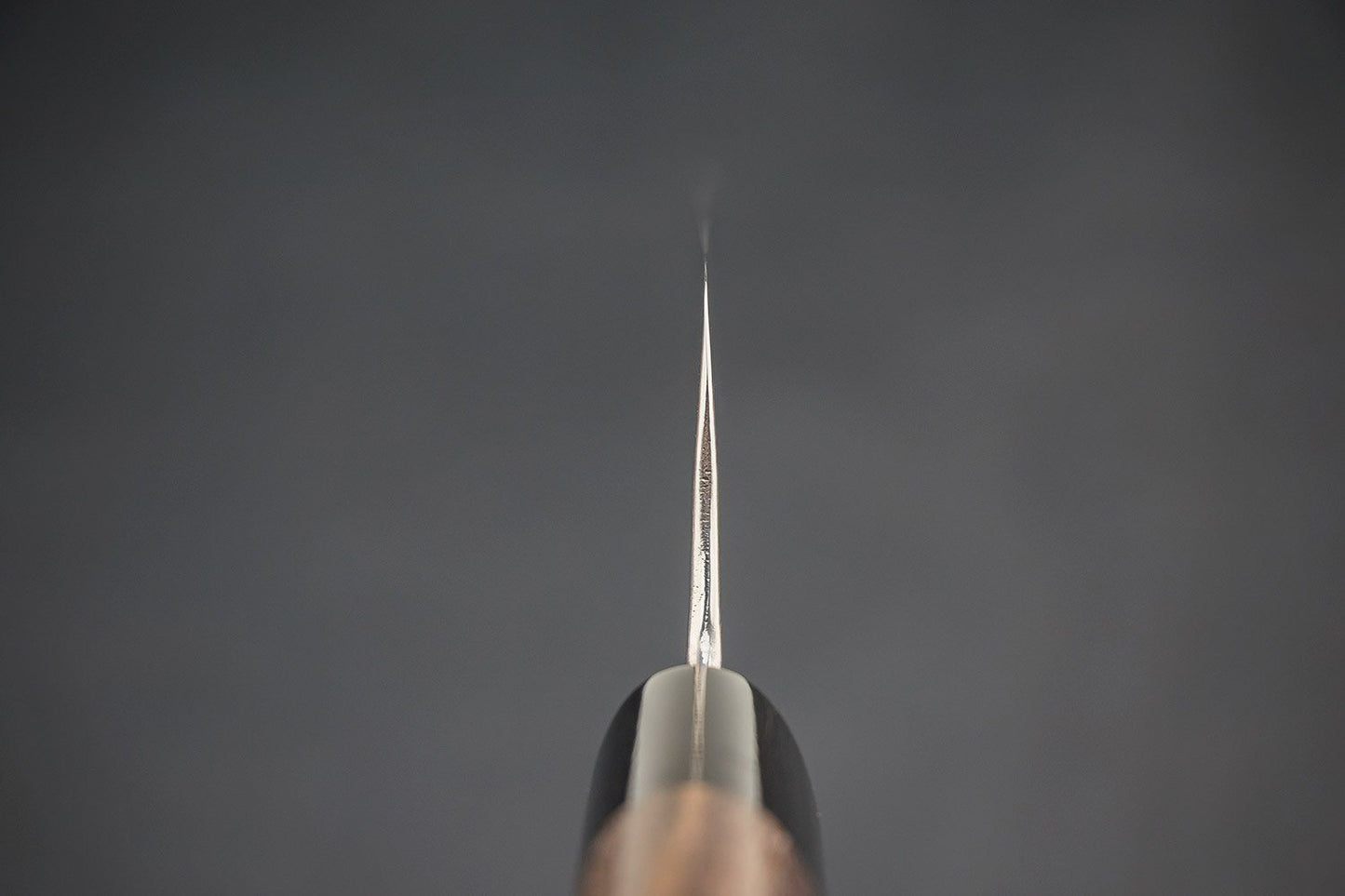Tsukasa Hinoura VS2 Colour Damascus Santoku 165mm
Tsukasa Hinoura VS2 Colour Damascus Santoku 165mm
Couldn't load pickup availability
Seriously. Look at this blade. Hinoura-san is a true artist. By layering copper and brass into his cladding steel, he has created this crazy three-tone Damascus pattern. Hinoura-san is the only blacksmith to win the award for top knife two years in a row at the Seki Custom Knife Show. Both times were for his incredibly distinct-looking Damascus steel.
About the Shape - This is also a multi-purpose knife, but with a slight vegetable bias. Santoku means 'Three Virtues' or 'To solve Three Problems'. The virtues or problems are slicing, dicing and mincing. Santoku is usually found in 160mm - 190mm lengths. These are more and more popular in Western kitchens due to the unique shape and smaller easy to handle size.
About Tsukasa Hinoura - Tsukasa Hinoura, born in 1956, began practising his trade in 1975. His blades are known for a refined and long-lived edge. His knives are highly sought after in Japan and Europe, and will soon have the same reputation in Canada. Hinoura-san represents the third generation of his family‘s forging tradition. As a young craftsman, his role models were Nagashima and Shigeyoshi Iwasaki of Sanjo. They enjoy an excellent reputation in Echigo and have done a great deal to advance the knife maker’s art in Sanjo.
A province in the northern part of central Japan, historically named Echigo, is by no means just another knife making region. There, the art of forging looks back on 700 years of tradition. The city of Sanjo is situated in this province, in today’s Niigata prefecture. This is where the Hinoura family have been plying the blade making a trade for decades.
| Knife Shape | Santoku |
|---|---|
| Blade Length | 165mm |
| Steel Type | VS2 |
| Rockwell Hardness | 61:63 |
| Handle | Wa (Japanese) Handle, Wa Octagon top/Oval bottom rosewood and water buffalo horn collar/back |
| Blacksmith/Maker | Tsukasa Hinoura |
| Shape | |
|---|---|
| Handle | - Oval Rosewood Black Pakkawood Collar |
| Made in |
Shipping and Returns
Shipping and Returns
We aim to ship your order within 1 business day at Knifewear, if there is a hold up, we'll aim to let you know and give you a timeline.
We offer $3 shipping on orders over $100* anywhere in Canada and $200* to customers in the USA. We ship worldwide, and offer up to the minute rates from our shipping partner DHL.
*Konro Grills and some other larger items are excluded from the free shipping offer.
How do I make a return on an online order?
No worries, we've got you sorted. Head over to https://knifewear.com/returns and follow the prompts.
Can I pick up my order Curbside / At the store?
Absolutely, as long as all the items you are looking for are in stock at the location you want to pickup from, you'll be able to select that at the checkout. If one or more items aren't at your preferred location we are happy to ship it to you.
Request Additional Info
Request Additional Info










